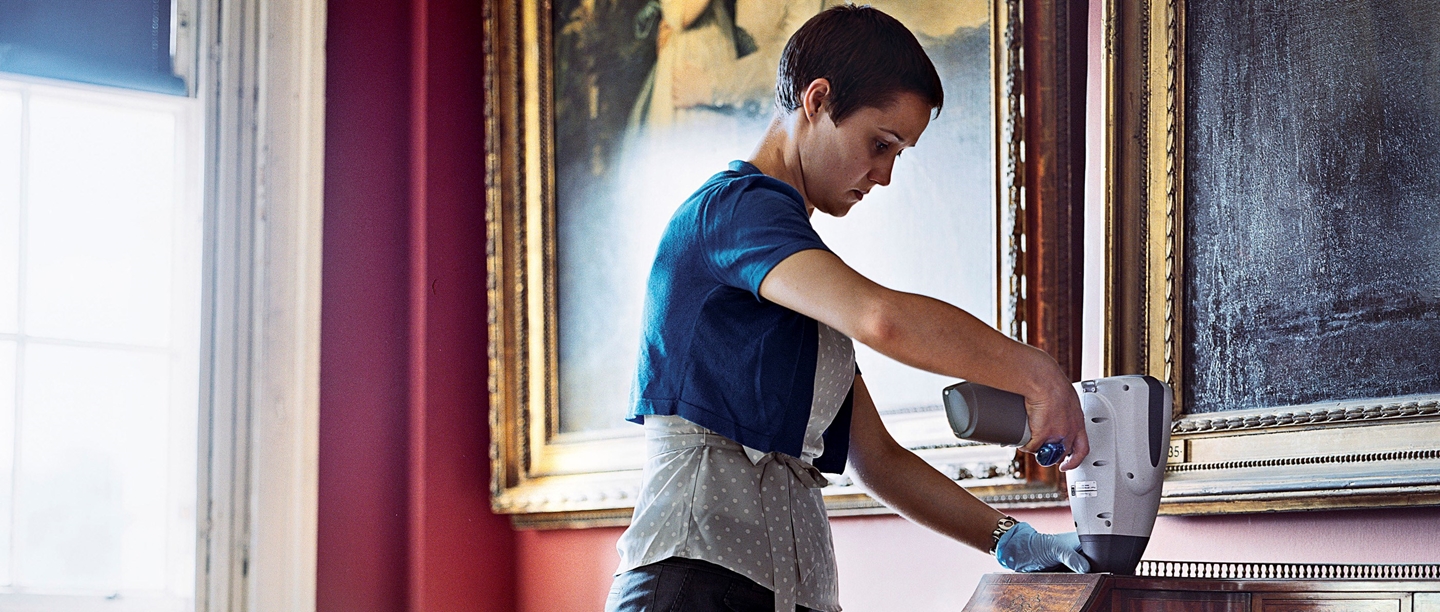Protecting Historic Photographs: Darwin's Daguerreotypes
Down House is home to six daguerreotypes (a type of photography invented in 1839 by Louis Daguerre) of Charles Darwin's children. One of these is the only known image of Charles Darwin with another person - his son William.
These photographs, formed of a thin layer of silver nanoparticles on a copper sheet, are very early examples of daguerreotypes. Sadly their original cover glasses have deteriorated, leaving the images underneath obscured. To restore them, English Heritage conservation scientists have been carrying out research and treatment.
First, the original cover glasses were analysed. This revealed sodium formate on the glass, a product that can cause glass corrosion, which in turn can damage the image underneath.
Conservators therefore replaced the glass on each daguerreotype, which helped to reveal the splendour of the images underneath. Despite this treatment, we are aware of cases where even modern replacement glass has rapidly deteriorated. English Heritage's investigation into ensuring the long term protection of these wonderful items continues.
Managing Mould
Mould is a major problem in historic properties and is predicted to increase at many UK sites with the expected changes in the climate. Previous research has shown that many conservation methods do little to prevent mould regrowth and that several actually encourage it.
Sophie Downes is undertaking a PhD to investigate mould in 20 historic properties, its risk to organic collections, and new treatment methods. The project has produced the first mould population survey of heritage environments in the UK, and includes DNA profiling.
The project is jointly funded by English Heritage and the National Trust at Birkbeck College (supervised by Dr Jane Nicklin).
Protecting Outdoor Sculptures
Although little can be done to slow the decay of outdoor marble sculpture, the fact that many of our historic houses close in the colder months allows us to use winter covers. However, we do not know how effective such covers are at particular sites and which designs work best.
Melanie Keable is undertaking a PhD project to assess how protective the differing cover designs are. It uses analytical techniques to establish the rate of surface deterioration of covered and uncovered marble pieces. The findings will be assessed alongside the monitored environmental parameters.
The project is a collaboration between English Heritage and University College London (supervised by Professor Matija Strlic), funded by the UK Arts and Humanities Research Council.
Conserving Archaeological Copper Alloy and Bone
Another area of research is on the corrosive effects of humidity and gases in showcases on archaeological copper alloys and bone. Existing studies have been inconclusive, so we are undertaking laboratory experiments to fill these gaps in our knowledge and ensure that this important evidence of our past survives. These experiments are based on methods developed during 10 years of research at English Heritage.
Extensive surveys of bone and copper alloy objects on display at our sites are being done to check that the laboratory results are representative of the real material.
This work is funded as a Conservation Fellowship by the Clothworkers’ Foundation, London, and is being carried out by Dr David Thickett. You can download more information about the project from the link below.
Another Arts and Humanities Research Council Collaborative Doctoral Project PhD is also investigating archaeological bone and ivory.
Read more about the Research
